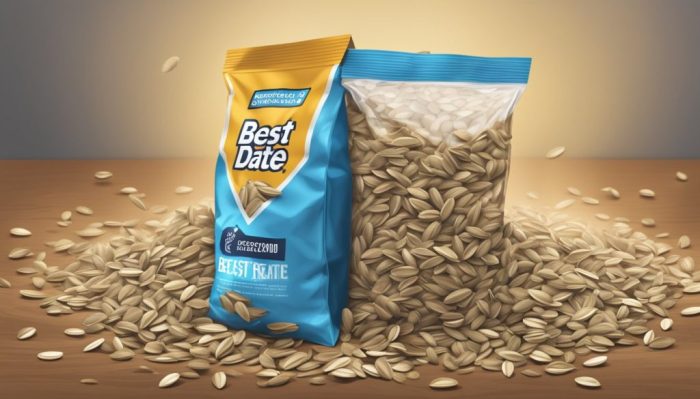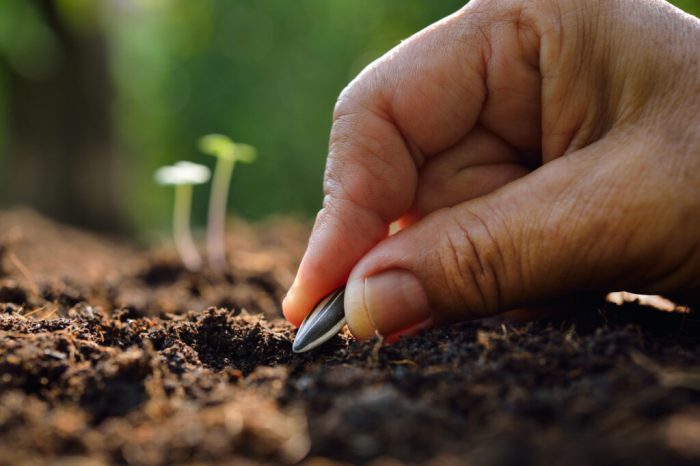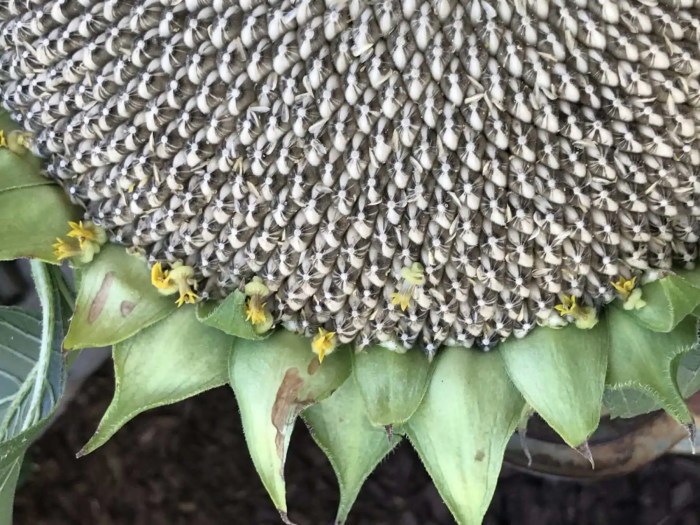When to Plant Sunflower Seeds
Ideal Planting Time Based on Climate
When to plant sunflower seed – The success of growing sunflowers hinges significantly on selecting the right planting time, which is largely determined by your local climate and the specific sunflower variety. Factors like frost risk and the length of the growing season play crucial roles in determining when to plant your seeds for optimal growth and yield.
Optimal Planting Times by USDA Plant Hardiness Zone
The following table provides recommended planting times for sunflowers based on USDA Plant Hardiness Zones. Remember that microclimates can significantly influence these times, so always consider your specific location’s conditions.
| Zone | Recommended Planting Time (Spring) | Recommended Planting Time (Fall) | Notes on Microclimates |
|---|---|---|---|
| 3-4 | Late May – Early June | N/A | Consider later planting if prone to late frosts. |
| 5-6 | Mid-May – Late May | N/A | Monitor soil temperature; plant when consistently above 50°F (10°C). |
| 7-8 | April – May | N/A | Early planting is generally safe in these zones. |
| 9-10 | March – April | October – November (for some varieties) | Fall planting possible in warmer microclimates. |
Frost Protection for Sunflower Seedlings
Frost is detrimental to young sunflower seedlings. A sudden drop in temperature can severely damage or even kill them. Several strategies can mitigate frost risk.
- Delayed Planting: Wait until all risk of frost has passed in your area.
- Row Covers: Use lightweight row covers or cloches to protect seedlings during cold snaps.
- Cold Frames: For more significant frost protection, consider using cold frames.
- Watering: Well-watered soil retains heat better than dry soil, offering some protection.
Growth Cycles of Different Sunflower Varieties
Different sunflower varieties exhibit varying growth cycles depending on their genetic makeup and the climate they’re grown in. Some varieties mature quickly (e.g., dwarf sunflowers), while others require a longer growing season (e.g., mammoth sunflowers). In colder climates, selecting early-maturing varieties is crucial to ensure successful harvesting before the first frost.
Soil Preparation and Planting Methods
Proper soil preparation is key to healthy sunflower growth. The soil should be well-draining, fertile, and free of debris.
Preparing the Soil for Sunflower Seeds
Follow these steps for optimal soil preparation:
- Soil Test: Conduct a soil test to determine pH and nutrient levels. Amend the soil accordingly.
- Tilling: Till the soil to a depth of 12-18 inches to loosen it and improve drainage.
- Amendments: Incorporate compost or other organic matter to improve soil fertility and drainage.
- Weed Removal: Remove any weeds or grass before planting.
Planting Methods: Direct Sowing vs. Starting Indoors
Sunflowers can be planted directly outdoors or started indoors. Direct sowing is generally preferred for its simplicity, while starting indoors allows for earlier planting and a head start on the growing season.
- Direct Sowing: Simpler, but susceptible to pests and weather conditions.
- Starting Indoors: Offers earlier harvest, but requires more attention and resources.
Planting Depth and Spacing
The following diagram illustrates the ideal depth and spacing for planting sunflower seeds. A simple illustration would show seeds planted 1 inch deep and spaced 6-12 inches apart in rows spaced 2-3 feet apart. Labels would clearly indicate “Seed,” “1 inch Depth,” “6-12 inches Spacing,” and “2-3 feet Row Spacing”.
Seed Selection and Germination
Choosing the right sunflower seeds and understanding the germination process are vital for a successful harvest. Consider variety, seed size, and source when selecting your seeds.
Factors to Consider When Choosing Sunflower Seeds
- Variety: Select a variety suited to your climate and desired height.
- Size: Larger seeds generally have higher germination rates.
- Source: Purchase seeds from reputable suppliers to ensure quality and viability.
Seed Germination Process
Sunflower seed germination requires optimal temperature, moisture, and light. Temperatures between 65-75°F (18-24°C) are ideal. Consistent moisture is crucial, but avoid overwatering, which can lead to rot. Light is not strictly required for germination, but it promotes faster and more consistent sprouting.
Germination Times and Success Rates of Different Sunflower Varieties
Germination times and success rates vary among sunflower varieties. The table below provides a general overview. Specific rates will depend on growing conditions.
| Variety | Germination Time (Days) | Germination Rate (%) |
|---|---|---|
| Dwarf Sunflowers | 5-7 | 85-95 |
| Mammoth Sunflowers | 7-10 | 80-90 |
| Russian Mammoth | 7-10 | 80-90 |
Sunlight and Water Requirements: When To Plant Sunflower Seed
Sunflowers are sun-worshippers, requiring ample sunlight for optimal growth. Proper watering is equally crucial for healthy development.
Daily Sunlight Requirements

Source: howtoeatthis.com
Sunflowers need at least 6-8 hours of direct sunlight daily. Less sunlight will result in weaker plants with fewer flowers and seeds.
Impact of Insufficient or Excessive Watering, When to plant sunflower seed
Insufficient watering leads to wilting, stunted growth, and reduced seed production. The plants will appear dry and droopy. Excessive watering, on the other hand, can cause root rot and fungal diseases. The leaves may yellow and the plant may collapse.
Watering Techniques
Drip irrigation is generally preferred for sunflowers as it delivers water directly to the roots, minimizing water waste and reducing the risk of fungal diseases. Overhead watering can be effective but may lead to fungal issues if the foliage remains wet for extended periods.
Pest and Disease Management
Sunflowers are relatively resistant to pests and diseases, but certain issues can arise. Early detection and preventative measures are key.
Common Sunflower Pests and Diseases
Common pests include aphids, birds, and squirrels. Common diseases include downy mildew, powdery mildew, and rust. These pests and diseases can significantly impact plant health and yield.
Preventative Measures and Organic Control Methods
- Crop Rotation: Rotate sunflower crops to reduce disease buildup.
- Pest Monitoring: Regularly inspect plants for pests and diseases.
- Handpicking: Remove pests by hand when possible.
- Insecticidal Soap: Use insecticidal soap to control aphids.
- Fungicides: Use organic fungicides to control fungal diseases.
Companion Planting
Companion planting can help deter pests and improve overall plant health. Marigolds, for instance, are known to repel certain pests.
Harvesting and Post-Harvest Care

Source: jungseed.com
Knowing when and how to harvest sunflowers is essential for maximizing seed quality and yield. Proper drying and storage methods ensure long-term seed viability.
Harvesting Sunflower Heads
Sunflowers are ready for harvest when the back of the flower head turns brown and the seeds are fully developed. Cut the heads, leaving a portion of the stem attached. Allow the heads to dry further before removing the seeds.
Drying and Storing Sunflower Seeds

Source: kellogggarden.com
Allow the harvested heads to dry completely in a cool, dry, well-ventilated area. Once dry, remove the seeds and store them in airtight containers in a cool, dark, and dry place.
Uses for Harvested Sunflower Seeds and Heads
Harvested sunflower seeds can be used for snacking, birdseed, or oil production. The flower heads themselves can be used for decorative purposes.
The ideal time to plant sunflower seeds is after the last frost, ensuring warm soil temperatures. However, if you’re using sprouted seeds, the timing differs slightly; for best results, consult this helpful guide on when to plant sprouted seeds to avoid any setbacks. Returning to sunflowers, remember that consistent watering after planting is crucial for healthy growth and abundant blooms.
FAQ
Can I plant sunflowers in containers?
Yes, sunflowers can be successfully grown in large containers, provided they have sufficient depth and drainage. Choose a container at least 12 inches in diameter and ensure adequate drainage holes.
How long do sunflowers take to mature?
The time to maturity varies depending on the variety, ranging from 50 to 100 days. Check the seed packet for specific information on the variety you have chosen.
What should I do if my sunflowers are wilting?
Wilting can indicate insufficient watering or pest infestation. Check the soil moisture level and inspect the plant for signs of pests or diseases. Adjust watering accordingly and address any pest issues.
Can I save seeds from my sunflowers for next year?
Yes, you can save seeds, but ensure the sunflowers are fully mature and dry before harvesting. Allow the seed heads to dry completely on the plant before collecting the seeds.





















